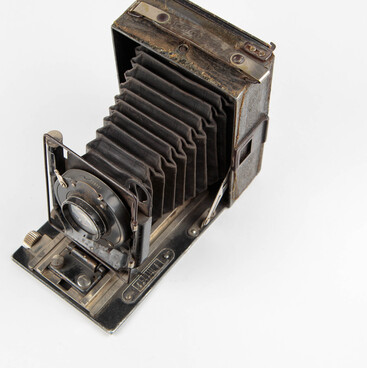The museum’s collection includes several spearheads that have been dated to the 12th — 13th centuries. This artifact with a length of 28 centimeters is younger: experts attributed it to the 14th century.
Spears were usually made for two purposes — thrusting or close combat. The shapes of the heads, which were made and attached to the wooden shafts, could be very diverse. Blacksmiths forged lanceolate heads rhombic in cross section, rhombic heads with a facet on the blade, elongated triangular heads, laurel-leaved ones and others. Their average length ranged from 15 to 35 centimeters.
Until the 14th century, judging by the illustrations provided in the Radziwiłł Chronicle, also known as the Königsberg Chronicle, spears were an important weapon in campaigns. In this document, spears are depicted in the images “The Battle of the Novgorodians with the Rostovites and Suzdalians on Zhdanaya Mountain”, “The Return of the Troops of the Vladimirovichi (Monomakhovichi) to Kyiv after the Campaign Against the Chernihiv Olgovichi”, “The Campaign of Svyatopolk Mstislavich of Volhynia to Novgorod; the Return of Rostislav Yuryevich to Yuri Vladimirovich Dolgorukiy (of Rostov)” and many others.
In the 14th century, when this spearhead was made, the Russian principalities were vassal territories and had to pay tribute to the Golden Horde. Several major battles took place in that century: the Tver Uprising against the Golden Horde baskak Chol-khan, the Battle on the River Pyana, the Battle of Kulikovo, and the Siege of Moscow by Tokhtamysh. The spear remained one of the main weapons in the battles of that era; it was used by both the warriors of the principalities and the army of the Ulus of Jochi (the Golden Horde).
Subsequently, spears
were abandoned. The book “The History of the Life Guards Grenadier Regiment:
1756–1906”, published in 1906, notes that in the mid-18th century,
“among the weapons assigned to the lower ranks of the Grenadier regiments,
there were still 216 spears and 4500 pikes for cheval-de-frise obstacles. These
spears were carried in a wagon and were used only in wartime. Pikes for
cheval-de-frise obstacles were bound with iron and connected to each other
using loops and hooks, and in this form, they served as a cover to protect a
formation during cavalry attacks.”


